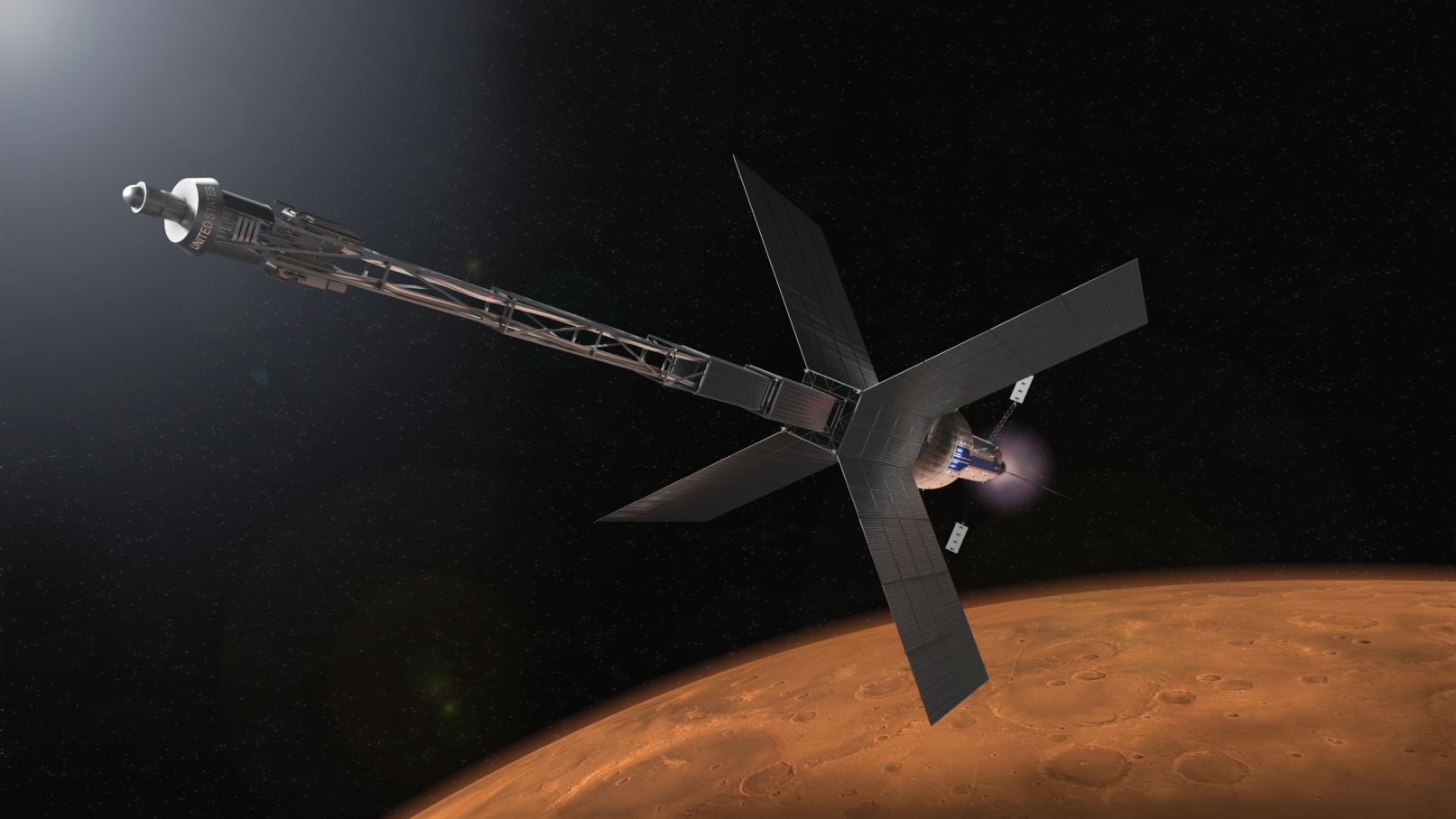
In what is likely one of his administration’s latest space policy initiatives, President Donald Trump has issued a directive setting out a roadmap for nuclear power applications beyond Earth.
The Space Policy Directive 6, released on December 16, calls on NASA and other federal agencies to advance the development of nuclear space propulsion systems as well as a nuclear fission system on the moon.
“Nuclear power and space propulsion are a fundamental technology that allows American missions deep into Mars and beyond,” Scott Pace, executive secretary of the National Space Council, said in a White House press release. “The United States intends to remain the leader among space nations by applying safe, secure and sustainable nuclear technology in space.”
Space-based nuclear power is not exactly a new idea: NASA and the Atomic Energy Commission have considered thermal nuclear propulsion – a concept that would have involved heating fuels with a nuclear reactor – since the 1970s as part of the NERVA project.
Another type of nuclear power, which converts heat from radioactive decay to electricity, has been used with hardware, from the Apollo lunar surface experiments to the Curiosity rover on Mars. (NASA’s Perseverance Rover, due to land on Mars in February, also has a radioisotope power system.)
NASA once considered putting a nuclear electric propulsion system on a spacecraft known as the Jupiter Icy Moons Orbiter, but that mission was canceled in 2005. There is now renewed interest in missions that require more energy than can be generated. of solar grids – and this is invigorating in nuclear power for space applications.
At a National Space Council meeting last year in Washington, DC, NASA Administrator Jim Bridenstine said that nuclear propulsion systems will be “absolutely a game changer” for space travel. The safety guidelines set at that meeting set the stage for the new directive.
Reacting to the release of the Space Policy Directive 6, Bridenstine hailed nuclear energy as an enabling technology for NASA’s Artemis program, which aims to establish a base at the South Pole of the Moon in 2020.
“NASA strongly supports the White House’s continued leadership in the agency’s Artemis program, which includes the landing of the first woman and the next man on the moon in 2024,” Bridenstine said in a news release. “On the Moon we will prepare for new sciences and human missions deeper into the solar system. The SPD-6 supports the Agency’s efforts to develop accessible, safe and reliable nuclear systems, including technology capable of continuously fueling operations in other worlds and propelling future human missions to Mars. “
NASA is working with the Department of Energy and business partners to design a nuclear power plant capable of generating 10 kilowatts of electricity per month. The demonstration plant, which would use the technology developed for NASA’s Kilopower project, could become a reality in the late 2020s.
It is unclear how the White House change would affect nuclear power plans in space – but for what it is worth, President-elect Joe Biden sees terrestrial nuclear energy as one of the ways to alleviate the climate crisis.
This is an adapted version of a report published on Cosmic Log. Main image: an artist’s conception shows a transit habitat on Mars with a nuclear propulsion system. Credit: NASA